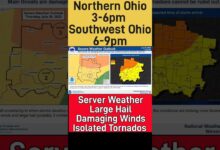
It's that time of year where you might be sniffling and coughing a bit more than usual.
Between seasonal allergies or a cold, knowing the difference of whether it's that or symptoms of COVID-19 is important.
The delta variant of COVID-19 is quickly spreading around the U.S., causing a new wave of the pandemic, a sharp uptick in case numbers and some businesses and entities to reimpose mask mandates or add vaccine mandates.
The best protection, according to the Centers for Disease Control and Prevention, is to get vaccinated. Vaccines are "highly effective" against COVID-19, including the delta variant, the CDC says.
The new variant is nearly twice as contagious, and the greatest risk of transmission is among unvaccinated people who are much more likely to contract and transmit the virus.
The CDC also recommends wearing masks to reduce transmission.
What to know about COVID-19 vaccine:Possible side effects and difference from COVID-19 symptoms
Symptoms of COVID-19:
Symptoms may appear two to 14 days after exposure to the virus. Anyone can have mild to severe symptoms.
- Fever or chills.
- Cough.
- Shortness of breath or difficulty breathing.
- Fatigue.
- Muscle or body aches.
- Headache.
- New loss of taste or smell.
- Sore throat.
- Congestion or runny nose.
- Nausea or vomiting.
- Diarrhea.
Are the symptoms between delta and previous variants any different?
In short, it's not completely clear.
Dr. Inci Yildirim, a Yale Medicine pediatric infectious diseases specialist and vaccinologist, said in a Yale Medicine article it seems like "cough and loss of smell are less common," when dealing with the delta variant.
"And headache, sore throat, runny nose, and fever are present based on the most recent surveys in the U.K., where more than 90% of the cases are due to the delta strain,” Yildirim added.
KF94 or KN95 mask?:What's the difference and how do they protect
Allergy symptoms
There are some key differences in symptoms. Currently, The Weather Channel's allergy tracker for Cincinnati is listed as "moderate," with low grass, tree and ragweed pollen counts.
Common allergy symptoms include:
- Runny nose.
- Sneezing.
- Red, swollen eyes.
- Itchy eyes.
- Itchy nose.
- Tickle in the throat.
- Rarely a fever.
What are the symptoms for a cold?
Symptoms usually appear one to three days after exposure to a cold-causing virus.
Like COVID-19, the symptoms are often:
- Coughing.
- Sneezing.
- Runny or stuffy nose.
- Sore throat.
- Tiredness.
- Sometimes a fever.
Unlike COVID-19, a cold is usually harmless and cold-sufferers generally recover in three to 10 days.
What about flu symptoms?
Cincinnati-area health care officials said the region could face a "twindemic" of flu and COVID-19 cases this fall and winter.
Last year, activity for the 2020-21 flu season was unusually low, with the CDC postulating vaccines and COVID-19 mitigation measures, including wearing face masks, staying home, hand washing, school closures, increased ventilation of indoor spaces, reduced travel and physical distancing may have contributed to the decline in illness, hospitalization and deaths from the flu virus.
Symptoms of the flu can include:
Influenza can cause mild to severe illness, and is different from a cold. Flu usually comes on suddenly, the CDC says.
- fever* or feeling feverish/chills
- cough
- sore throat
- runny or stuffy nose
- muscle or body aches
- headaches
- fatigue (tiredness)
Some people may have vomiting and diarrhea, though this is more common in children than adults.
The CDC says it’s important to note that not everyone with flu will have a *fever.
What are the side effects of the flu shot?
The CDC recommends that people should be vaccinated by the end of October for the best protection this season. Symptoms of the vaccine include:
- Soreness.
- Redness and or swelling from the shot.
- Headache.
- Fever.
- Nausea.
- Muscle aches.
Flu vaccine:When is the best time to get the shot, side effects and more to know
COVID-19:Less masking may mean 'twindemic' with flu in Cincinnati region
Source link








